Battle of Basantar: When a 21-Year-Old Braveheart Single-Handedly Defeated 7 Pak Tanks
The story of the greatest tank battle fought by the Indian army and the unsung hero who led India to a legendary victory.

“The tank’s a part of my destiny. But whenever I see the Famagusta, I remember Arun saheb, my commander, who fought like a tiger”, says Nathu Singh, describing the mixed feelings evoked in him by the sight of Famagusta JX 202 — the historic Centurion Mark 7 tank that decimated seven Pakistani Pattons during the greatest tank battle fought by the Indian Army – the Battle of Basantar.
During the Indo-Pak War of 1971, Nathu Singh served as the gunner of this historic tank under the command of 21-year-old Second Lieutenant Arun Khetarpal – who died in his arms.
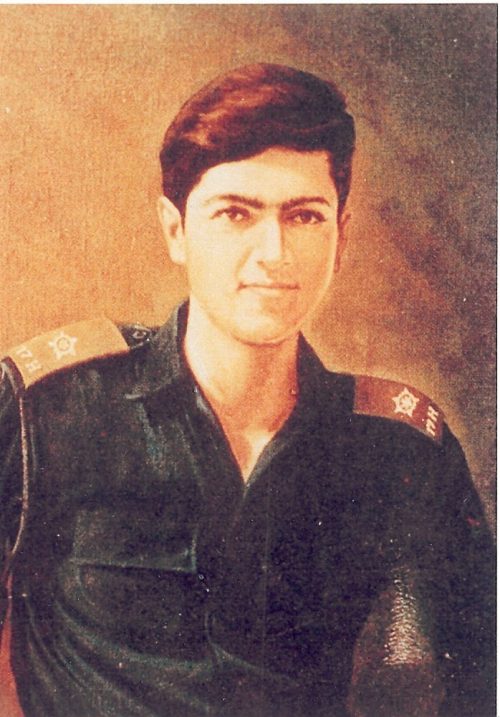
The incredibly courageous Khetarpal, who belonged to the Poona Horse regiment, was posthumously awarded the Param Vir Chakra for his actions during the fiercely-fought Battle of Basantar.
Just how fierce can be gauged from the fact that Pakistan lost a staggering 48 Patton tanks in the epic battle that took place in its own territory, completely wiping out its 8 (Independent) Armoured Brigade. In fact, by the end of the war, India’s Black Arrow Brigade (comprising the Poona Horse and Hodson’s Horse regiments) had won 79 gallantry awards to become the most highly decorated formation of the Indian Army!
Here’s the story of this legendary battle and the unsung hero who led India to a thumping victory.
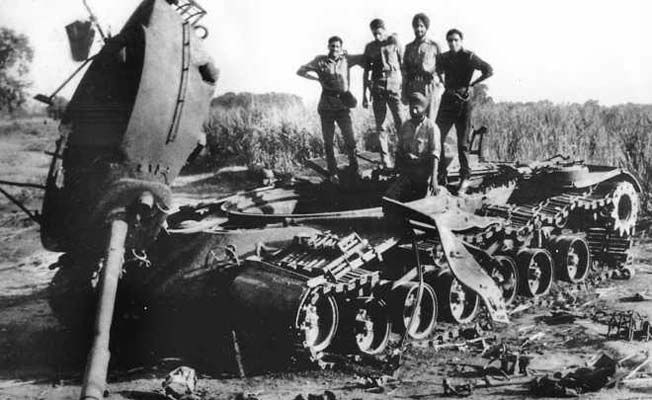
The year was 1971. War clouds were gathering on the horizon and the Indian military forces were in a state of high alert and readiness.
When the Pakistan Air Force launched pre-emptive strikes on Indian airfields on the eve of December 3, 1971, India immediately responded by formally declaring war in the wee hours of December 4. Hours later, IAF Canberra aircrafts struck Pakistani airfields as ground battles immediately commenced in nearly every sector.
Arun Khetarpal had just joined the Indian Army as a second lieutenant when he was called to the war front in 1971. Born on October 14, 1950, in Pune, he came from a family with a long tradition of service in the army. His grandfather served in the British Indian army during World War I and Arun’s father, Brigadier M.L. Khetarpal, served in Indian Army’s Engineering Corps till he retired from service.
Unsurprisingly, the deeply patriotic lad always aspired to become an army officer, right from his childhood. After his schooling from Sanawar’s prestigious Lawrence School (where he was popular for being an ace swimmer and saxophone player), Arun joined the National Defence Academy (NDA) in 1967 and was commissioned in the 17 Poona Horse on June 3, 1971.
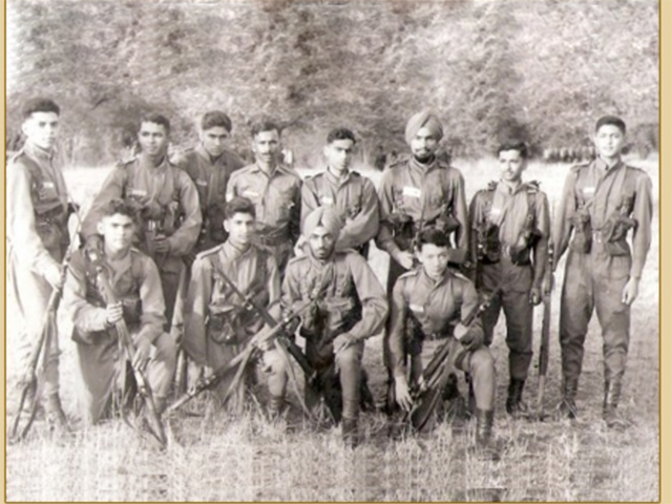
Six months later, the war was declared and Arun’s regiment (under the command of 47 Infantry Brigade, also called the Black Arrow Brigade) was ordered to establish a bridgehead across the Basantar river in the Shakargarh sector — a 30 km dagger-shaped bulge of the Pakistan boundary towards Indian territory through which river Basantar gently meandered.
Close to the Pakistani base in Sialkot, this territory was of strategic importance for both sides as it comprised road and rail links to Jammu from Punjab which, if cut off by Pakistan, could have led to snapping of a key link to Jammu and Kashmir. Also, sensitive areas such as Amritsar, Pathankot and Gurdaspur lay within easy striking distance.
Recognising the importance of controlling this position, the 47th Brigade responded with alacrity, building the bridgehead by 2100 hours on December 15, 1971. For the uninitiated, a bridgehead is a strong position secured by an army inside enemy territory from which it can advance or attack.
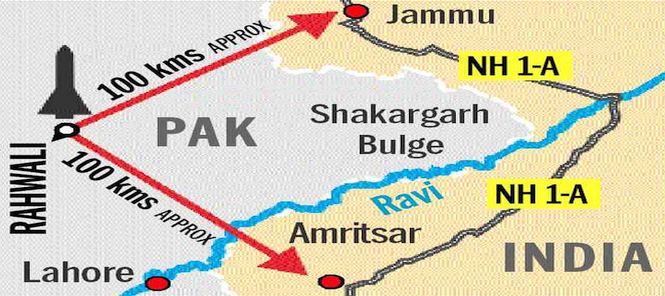
Now, it was the job of the brigade’s engineers to breach the enemy minefields and create a safe lane that would allow the induction of the 17 Poona Horse tanks. The army engineers were halfway through their task when the Indian troops at the bridge-head reported alarming activity of Pakistani artillery and requested immediate tank support.
At this critical juncture, the 17 Poona Horse decided to push through the minefield despite it being only partially cleared by that time. On the fateful morning of December 16, two tank troops of Poona Horse (one of which was under the command of 2/Lt Arun Khetarpal) were ordered to move towards Jarpal in Pakistan.
En route, while crossing the Basantar River, the tank troops came under fire from Pakistani tanks as well as recoil gun nests that were still holding out. They retaliated fiercely — destroying tanks, capturing gun nests and over-running enemy defences.
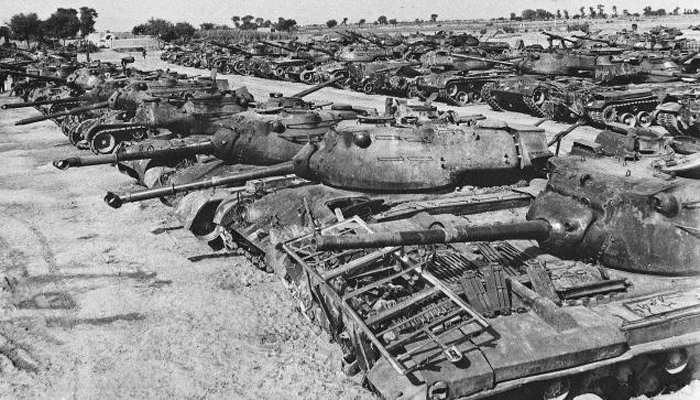
During these ferocious skirmishes, one of the tank troops were hit and the commander killed on spot. This left Arun and his tank troops all alone in the combat zone with a squadron of 14 Pakistani Patton tanks approaching them.
Outnumbered but undeterred, the gutsy 21-year-old led a daring and highly skilled counter-attack. His Famagusta JX 202 (named after a township in East Cyprus where the Poona Horse was stationed in the late 1940s) single-handedly destroyed five of the enemy tanks before both the tank and Arun were hit by a shell.
Also Read: An Unsung Hero — The Story of Nirmal Jit Singh Shekon, IAF’s Only Param Vir Chakra
As he was grievously injured and his tank was aflame, Arun was asked by his superior to withdraw but the young officer with barely six months of service refused to budge ’till his gun would fire.’
The gallant officer sent a message to his Commander — “No Sir, I will not abandon my tank. My gun is still working and I will get these guys” — before switching off his transmitter (so that he did not receive any further orders to evacuate his tank) and continuing his relentless pursuit of the enemy.
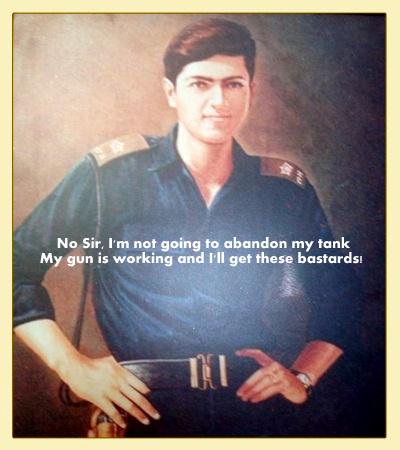
Fighting till his last breath, Arun destroyed two more Pakistani tanks and forced one to be abandoned before his tank was hit a second time and he was martyred. But by then, he had accomplished what he had set out to do — give the Indian Army a crucial edge that would lay the foundation for victory
The following days saw Indian troops making massive gains and conducting successive military thrusts deep inside enemy territory, coming threateningly close to the Pakistan Army base at Sialkot.
Extremely alarmed, the Pakistan Army called in the Pakistan Air Force to repel the Indian attack on the base. However, they soon realised that they were in no position to counter another massive assault by the Indian Army, this time backed by the Indian Air Force, and offered unconditional surrender which led to a ceasefire.
India’s resounding victory in the Battle of Basantar resulted in the capture of a significant area ( including nearly 500 villages) under the control of Pakistan in Chhamb sector, apart from cutting off the line of retreat for Pakistani troops.
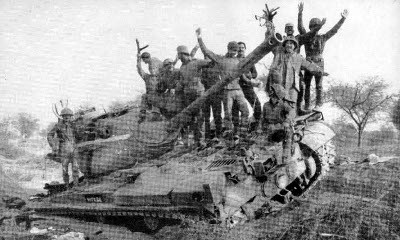
But the victory came at a great cost for the Indian Army. Seven officers, four junior commissioned officers and 24 other soldiers laid down their lives while defending the nation, including 2/Lt Arun Khetarpal who was posthumously honoured with the Param Vir Chakra for displaying “inspiring qualities of leadership, tenacity and exceptional courage in the face of the enemy”.
The youngest Indian to win the country’s highest wartime gallantry award, Arun’s PVC citation said:
“His intrepid valour saved the day; the enemy was denied the breakthrough they were so desperately seeking. Not one enemy tank got through.”
Soldiers like Arun Khetarpal are not born every day. The sacrifice of this heroic warrior must forever be remembered with gratitude by the country he died protecting.
Here’s some interesting trivia to end this epic saga:
As a result of the humiliating defeat at Basantar, Pakistan removed the commanding officers of 1 Corps and 8 Division as well as the commander of the armoured brigade. In contrast, the then-commander of the 47th Brigade, Brig AS Vaidya, won his second Maha Vir Chakra in the 1971 war and rose to become the country’s Army Chief.
The 47th Infantry Brigade — whose motto “Bash on Regardless”sums up its fighting spirit —was also renamed the Basantar Brigade in honour of its thumping victory in 1971 and is today regarded as one of the most decorated Brigades of the Indian Army.
You May Like: Operation Trident,1971 — How Indian Navy Pulled Off One Of Its Greatest Victories
Like this story? Or have something to share? Write to us: [email protected], or connect with us on Facebook and Twitter.
NEW: Click here to get positive news on WhatsApp!
If you found our stories insightful, informative, or even just enjoyable, we invite you to consider making a voluntary payment to support the work we do at The Better India. Your contribution helps us continue producing quality content that educates, inspires, and drives positive change.
Choose one of the payment options below for your contribution-
By paying for the stories you value, you directly contribute to sustaining our efforts focused on making a difference in the world. Together, let’s ensure that impactful stories continue to be told and shared, enriching lives and communities alike.
Thank you for your support. Here are some frequently asked questions you might find helpful to know why you are contributing?


This story made me
-
97
-
121
-
89
-
167











